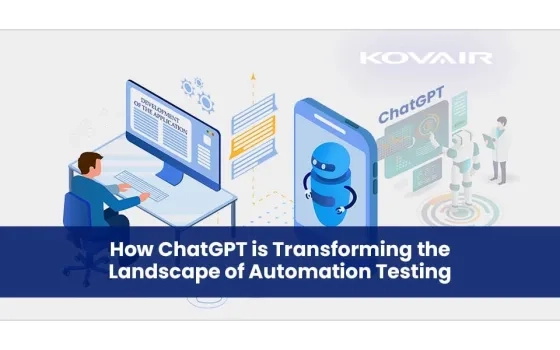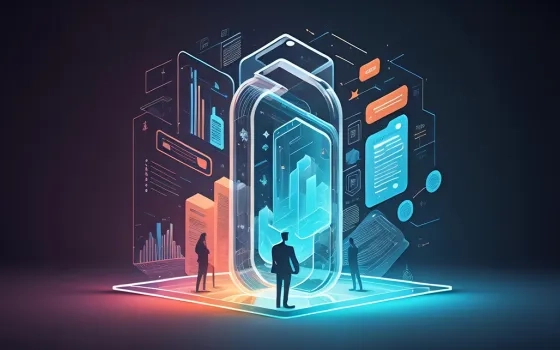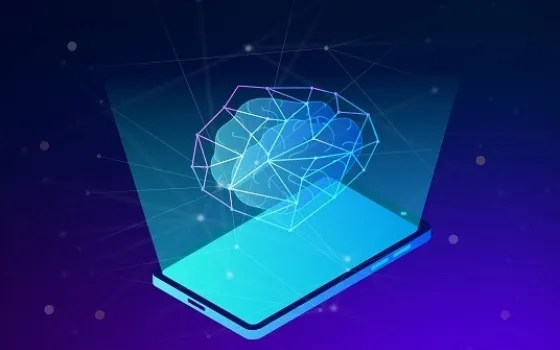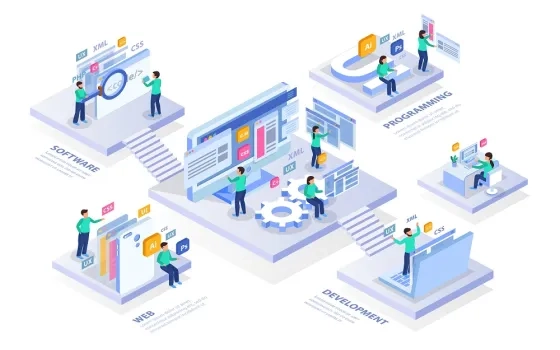Currently, the need for software testing has gained huge popularity. Automation testing is crucial in software testing to develop high-quality software applications. Unlike manual testing, it can save time and money in the release of applications that meet end-user experience requirements. Thus, automation testing can be an effective way to speed up the release of software applications.
If we look at the report of Global Forecast to 2027 published by MarketsandMarkets, automation testing is expected to surge to $52.7 billion from $24.7 billion by 2027 at a CAGR of 16.4%. This data shows that organizations invest more in automation testing to develop high-quality software applications.
However, with advances in technology and the complexity of modern software applications, test automation will also turn out to be complex. The creation of test cases, the writing of test scripts, and the successful execution of test automation continue to be challenges for testers. It is also a daunting task for new testers to be updated with the latest tools and techniques for automation testing.
The development of modern AI technologies like Natural Language Processing and machine learning has transformed the landscape of automation testing. It enables advanced abilities like a natural language test case and data generation, advanced test result analysis, and more. Recently, ChatGPT entered the mainstream of automation testing and became the forefront of this transformation. It can talk to you, teach you how to write test cases, do coding, and do other things like pro-human.
In this respect, we will discuss in-depth how ChatGPT transforms automation testing and offers benefits in software development. At the end of this blog, you will learn how to use ChatGPT for automation testing.
Let’s dive deep into ChatGPT in detail to understand its role in test automation.
What is ChatGPT?
ChatGPT is developed by OpenAI, also known as a Generative Pre-trained Transformer. It is a state-of-the-art artificial intelligence model that uses deep learning techniques to evaluate and comprehend natural language. It is based on transformer architecture and gives a human-like response like an AI chatbot relevant to the input text.
With ChatGPT, you can get answers to any of your queries, learn technical concepts, and perform advanced tasks like writing test cases. Some of the valued features of ChatGPT are as follows:
- Understand the natural language and interpret words.
- Chat in understandable language with any user.
- Produce creative responses to any topic.
- It can process long sequences of text.
- Generate new text based on the input text, which broadens its use.
It can be said that ChatGPT’s advanced language processing ability and generative power make it a valuable tool. Due to its ability to interpret and evaluate the natural language, it is a helpful tool in test automation to create test cases and others. However, you should note that ChatGPT is an AI language model and does not involve itself in the software development process, and its approach is like automation testing. You can seek information and insight on automation testing with ChatGPT.
To learn more about ChatGPT and automated testing, read the section below.
ChatGPT and Automated Testing
Chat GPT is widely used for automated software testing, making it more efficient, cost-effective, and accurate than before. Automation testing is an integral part of the Software Development Life Cycle and allows for checks for bugs and errors with less human intervention. However, running such tests on a cloud-based platform is preferred for better scalability, security, and reliability than other automation testing tools.
Cloud-based testing platforms like LambdaTest offer automation testing for web and mobile applications. It allows cross-browser testing across 3000+ browsers, OS, and devices. One of the key benefits of using LambdaTest in automation testing is that we can leverage the features offered by ChatGPT to create effective test cases and run them over the cloud at scale.
As part of ChatGPT, it can generate code as a response to the user’s request. The best part is that it can write code in multiple programming languages and frameworks. For example, you can write Selenium code in Python, Java, and other languages. You can prove it further if there is a need to modify the same code.
However, Chat GPT is not just limited to writing or creating code. It can perform many different functions as a boon to automation testing. Some of those are as follows:
- Create automation test cases for any test environment.
- Generate complex test automation testing pipeline using CI/CD.
- Give easy-to-understand code along with instructions to use it.
- Defines positive and negative test cases no matter the application’s complexity.
Next, we will see in-depth how ChatGPT transformed the landscape of automation testing.
Transformation of Automation Testing with Chat GPT
With Chat GPT, automation testing has become more reliable and intelligent. It has enabled testers and developers to create test cases and test data without manual intervention. ChatGPT has lowered the risk of error and requires less time and effort to perform the automated test. Further, you can identify potential issues and defects in applications with a better test result analysis.
The transformation of automation testing with ChatGPT is significant. Here are some key ways in which ChatGPT is transforming automation testing.
Test Case Generation
Chat GPT helps the testers create test cases and write test scripts based on the user stories. You can easily create a test case that includes all ranges of test scenarios and edge cases. Chat GPT analyzes the natural language input to generate a human-like response. As a result, because it eliminates the need for user programming skills, even non-technical stakeholders can participate in the testing process.
Testers with limited scripting language knowledge can create a test case and write test scripts with ChatGPT. You can describe the test scenario in plain English, and ChatGPT will automatically give corresponding test cases and test scripts. For example, you can create test cases for different requests, like ideas for testing a banking transaction. Below is a screenshot of the test case generated by Chat GPT.
Automate Test Cases
After creating test cases, the next step involves automating the test cases. ChatGPT can help you with the instructions to automate the test cases. However, it does not provide a real device scenario to test an application. Rather, you have to provide the right instructions to Chat GPT to get the codes to automate a test case.
For example, you can ask to generate code to automate test cases using Java, JUnit, and Selenium. It will give you a detailed explanation of how to generate automation code, which can be customized based on requirements.
Check for the below screenshot of the response on the Selenium code.
Test Data Generation
ChatGPT helps to generate test data based on user stories and requirements. With ChatGPT, you can save much time and effort in generating test data, which would otherwise have to be done manually. You can now create test data that covers all ranges of data inputs, unexpected inputs, and edge cases. Thus, it helps improve software applications’ quality, reliability, and functionality by lowering the risk of error in the software development process.
Test Result Analysis
Analysis of test results is one of the major tasks in automation testing. It involves interpreting the test outcome after the execution of test cases to find bugs and address the quality of a software application. Such a task can be done seamlessly with ChatGPT. It can automatically evaluate the test results and check for a particular pattern in the data.
Report Errors in Software Application
In the automation testing process, reporting errors or bugs found is a key task. This involves identification, documentation, assigning, and tracking the error. With ChatGPT, you can report error-related information based on its natural language. However, you cannot directly report the error in automation testing. Rather, you can use this to evaluate and interpret the outcome of the automated tests.
Further, you can identify patterns in the test data and seek insight into the quality of software applications. It is also possible to identify correlations between test results and errors and provide responses on possible defect causes. This is done as ChatGPT considers the logs generated by the inputs of the automated test.
Machine Learning
Finding the error-prone component of software applications that impacts their functionality is one of the challenges that testers face during automation testing. You can use ChatGPT to address this issue efficiently. The machine learning capabilities of ChatGPT are used to find which component of a software application is more prone to errors, issues, or defects. You can prioritize testing efforts and address issues in software applications by analyzing a large set of data.
Make SQL Request
ChatGPT can help you write SQL queries to get pertinent information from the database tables as part of automation testing. It is done by leveraging the natural language processing capabilities of ChatGPT.
You must first define the test requirements and the data that must be tested. Followed by this, write test scripts that must include ChatGPT API calls so that SQL queries can be generated in terms of test requirements. With this, API will take input of test requirements and give SQL queries as output. Thus, with ChatGPT, you can maintain the accuracy and consistency of automation tests as SQL generated meets the Software Requirement Specification.
Low Code Testing
Low code development has eased the creation of an application. Testers with little or no programming skills can develop software with low code testing. ChatGPT can be used as a low code testing tool due to its underlying features of natural language processing, use of Page Object Model to update code, and others.
It is now easy to change and fix code with ChatGPT. For example, you can ask ChatGPT to modify the code that previously generated bugs. You can implement similar changes in the code by utilizing ChatGPT based on the conversational model.
Performs Exploratory Testing
ChatGPT transforms automation testing so that you can successfully carry out exploratory testing. ChatGPT imitates a real-world user and interacts with the software application under test in a human-like manner because it can comprehend and formulate human-like responses. With this, you can quickly find the issues or bugs that might be challenging in more conventional scripted testing.
Conclusion
The transformation of the landscape of automation testing gives new insight into testing software applications. ChatGPT is a game changer in software automation testing. It makes automation testing more efficient and effective than before. Based on its Natural Processing Language and machine learning, generating test cases and scripts that transform the automation testing process is easy. If you are into automation testing, you can use ChatGPT as a helping tool, which will not only ease your work but also ensure accuracy.
Source: How ChatGPT is Transforming the Landscape of Automation Testing






















